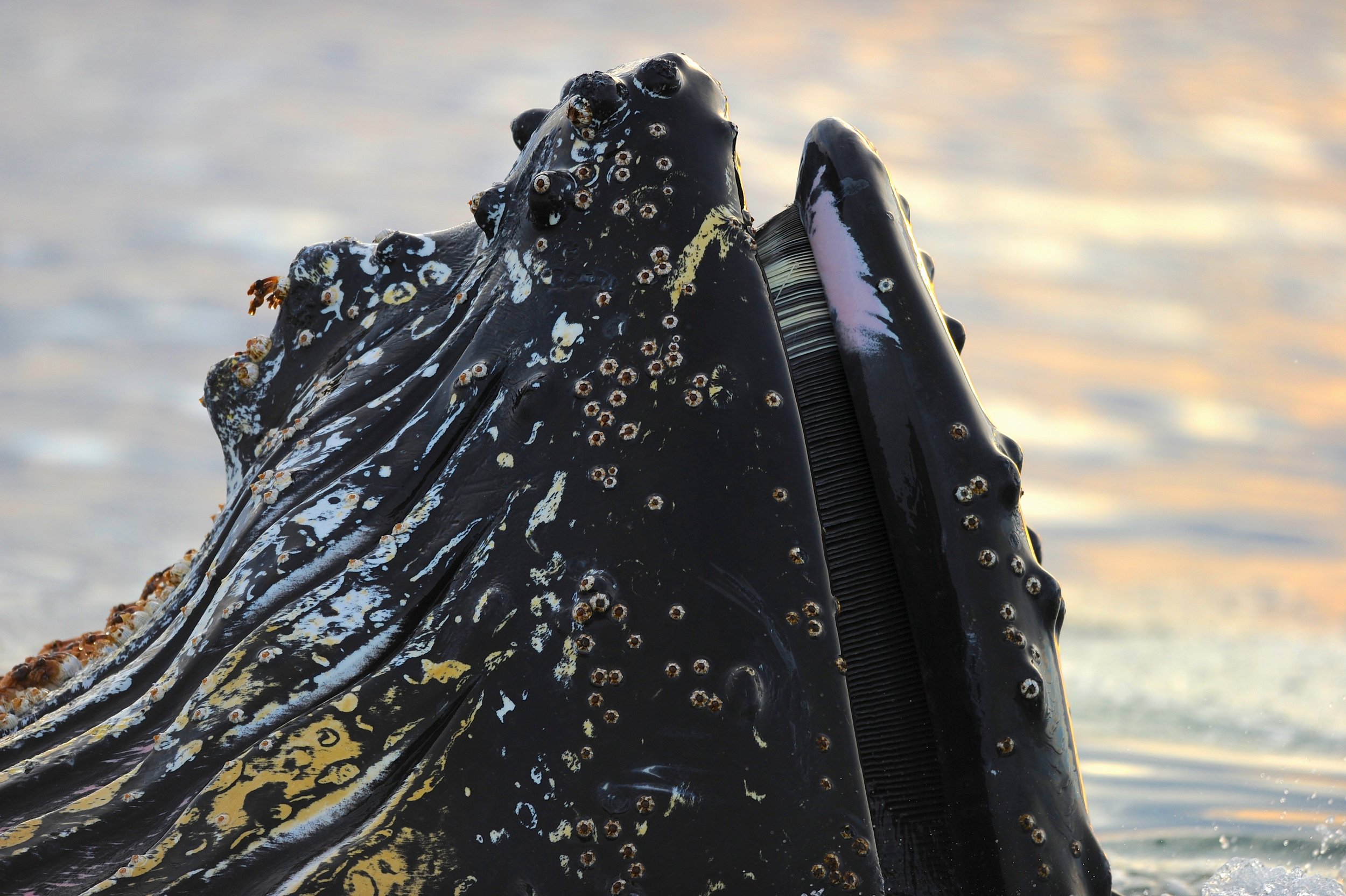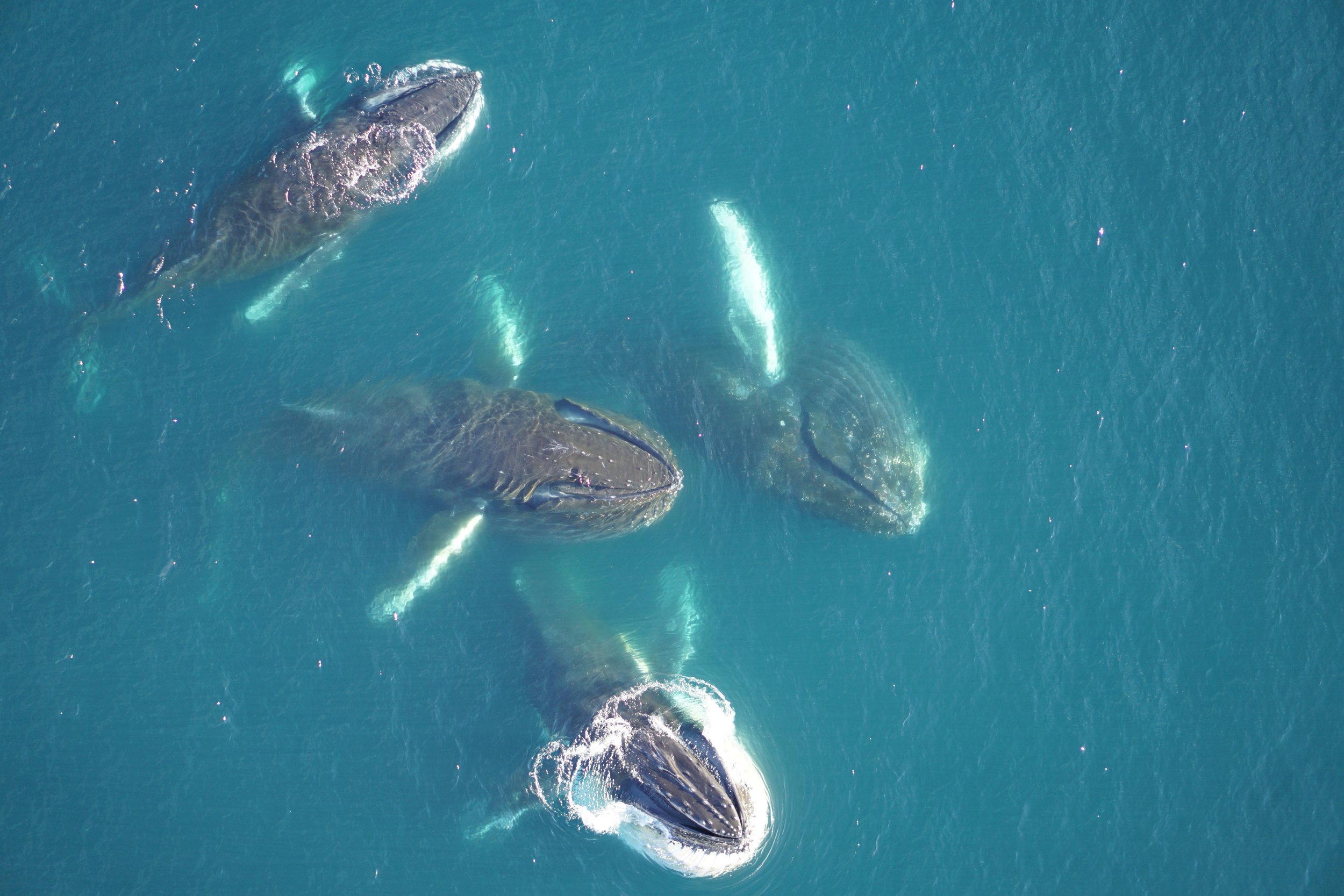New research: Krill availability impacts humpback whale pregnancies
© Duke University Marine Robotics and Remote Sensing Lab
New research shows reduced krill supplies lead to fewer pregnancies in humpback whales – a finding that could have major implications for industrial krill fishing.
The paper, published in Global Change Biology, contains data on humpback whale pregnancies from 2013 to 2020 in the Western Antarctic Peninsula, where krill fishing is concentrated.
In 2017, the year after krill were abundant, 86% of sampled humpback females were pregnant. But in 2020, following a year in which krill were less plentiful, only 29% of humpback females were pregnant.
Krill availability in the year before a humpback pregnancy is crucial as females need to fatten up to support the upcoming pregnancy.
Lead author Dr Logan Pallin, University of California, Santa Cruz, said the study demonstrates for the first time that there is a link between population growth and krill availability in Antarctic whales.
“This is significant because until now, it was thought that krill were essentially an unlimited food source for whales in the Antarctic. Continued warming and increased fishing along the Western Antarctic Peninsula, which continue to reduce krill stocks, will likely impact this humpback whale population and other krill predators in the region.”
”This information is critical as we can now be proactive about managing how, when, and how much krill is taken from the Antarctic Peninsula. In years of poor krill recruitment, we should not compound this by removing krill from critical foraging areas for baleen whales,” Dr Pallin said.
Co-author Dr Ari Friedlaender, University of California Santa Cruz, said the Western Antarctic Peninsula is experiencing some of the fastest climatic warming of any region on the planet.
“Winter air temperatures have risen nearly 5°C since the 1950s and the annual sea ice extent is, on average, 80 days shorter than four decades ago. Krill supplies vary depending on the amount of sea ice because juvenile krill feed on algae growing on sea ice and also rely on the ice for shelter.”
“In years with less sea ice in the winter, fewer juvenile krill survive to the following year. The impacts of climate change and likely the krill fishery are contributing to a decrease in humpback whale reproductive rates in years with less krill available for whales,” Dr Friedlander said.
Chris Johnson is a co-author and also the global lead of the World Wide Fund for Nature’s Protecting Whales & Dolphins Initiative.
“Our research shows that highly precautionary management measures are needed to protect all Antarctic marine life that depend on krill for their survival. This includes blue, fin, humpback, minke, and southern right whales and other krill predators such as penguins, seabirds, seals and fish.”
Krill are not an inexhaustible resource and there is a growing overlap between Industrial krill fishing and whales feeding at the same time. Humpback whales feed in the Antarctic for a handful of months a year to fuel their annual energetic needs for migration that spans thousands of kilometers. We need to implement networks of marine protected areas here that will benefit whales across their entire range,” Mr Johnson said.








